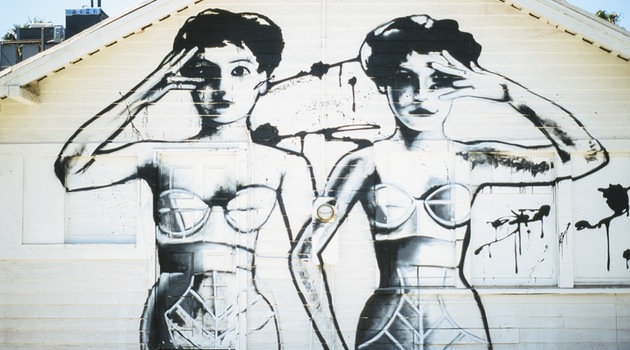As far as I’m concerned, the two most addictive reads to come out of Summer 2016 are: the novel The Girls by Emma Cline (Random House, June 2016) and the memoir Land of Enchantment by Leigh Stein (Plume, August 2016).
In both Cline’s fictional narrative and Stein’s real-life account, young women push boundaries, hide harsh truths from parents, and eventually from move away from home.
Our narrator in “The Girls,” Evie is a well-off if emotionally neglected child of divorce whose run-ins with a 1960s California love-cult grow darker with each encounter. Russell, the charismatic cult-leader (a character based on Charles Manson), holds strong appeal for Evie. But the real pull into this sinister world comes from the young women who follow Russell. Evie wants their friendship and acceptance by any means. More than once, she runs away from home to live at Russell’s compound, to be closer to The Girls.
“Land of Enchantment” explores how, seemingly on a whim, Leigh Stein moved from Chicago to Albuquerque with her 18-year-old boyfriend when she was 22. Forsaking friends, family and support networks, her only goal was to spend that time writing a novel. The nickname for New Mexico is, after all, the Land of Enchantment.
In both stories, the fantasy wears thin, and fast. Indeed, the consequences are lethal in both tales.
In Evie’s case, the 14-year-old slowly comes to realize that Russell is manipulative and possibly psychotic. Drugs, hunger and the promise of more affection keep her loyal to Russell’s Girls, until cult members start attacking and murdering innocent Californians. Leigh Stein’s romantic view of an erratic partner can only take her so far, until she finds herself socially and physically isolated, trapped in an abusive relationship. Three years after separating from this volatile boyfriend, Stein learned of his untimely death in a motorcycle accident and had to once again confront their messy and traumatic shared past.
Stein’s gift is being able to weave the mundane, the hideous, and the beautiful into a single scene.
Here are some memories from when she first relocated to the Southwest:
The Sandia Mountains, named after their watermelon-colored glow, towered dramatically out our eastern-facing windows, casting a rosy shadow over a sprawling city of terra-cotta and turquoise, midcentury motels and homeless hippies, fast food drive-throughs and parking lots filled with mobile homes, and strip smalls stuck in the middle of desert beauty. As it cooled toward dusk, we’d put on cowboy hats we’d bought in Amarillo and go out to the rocky ditch across the road to shoot BB guns at Sprite cans.
“The Girls” is also firmly situated in the promise of California, the fickleness of the entertainment industry, and the mystical spirit of the 1960s.
But what drew these young women to such dark paths? Both these books offer psychological insights which, if not all-encompassing, ring true anyway.
One answer: the media. Evie and her best friend Connie begin the novel paging through women’s magazines, hanging on every bit of advice about beauty, appearance, and pleasing a man. They swoon over saccharine pop songs about love, though they’re only in 9th grade and haven’t experienced much of the subject.
Stein recalls vividly scenes from reality shows like “Rock of Love” or “My Big Fat Gypsy Wedding” as they played in the background of defining moments of her life (from hiding out with friends after an ugly episode with an ex, or settling in for a cozy evening in a new and healthy relationship). These details may suggest that Stein sought to star in her own campy network melodrama by holding onto a relationship with an abuser. But this is not quite right. Throughout “Land of Enchantment,” Stein fearlessly explores her own psyche and history of mental illness, as well as the artistic and cultural touchstones that helped her make sense of her own life—from Sylvia Plath’s poetry to paintings and memoirs by Georgia O’Keefe.
The same is true of “The Girls.” Cline details low expectations set for girls by peers, schools and parents, further enforced by pop culture. But that alone does not account for Evie’s obsession with Russell’s Girls.
Stein is unflinching and uncanny as she describes what, for her, being in a distressed mental state, and being in an abusive relationship, is like:
Imagine if Rapunzel got saved from her tower but then the prince let her visit the witch on weekends, for that familiar pain, that yank of the hair—that’s what I wanted.
In e-mails to friends I was always carefully measuring what to leave in (I craved sympathy and understanding) and what to leave out (I couldn’t tolerate being told I deserved better, even if I knew it myself, because that meant I was choosing to stay inside the nightmare, and therefore everything he did was the consequence of my not leaving.)
In a similar vein, Cline describes the deep longing for acceptance as Evie’s motivation for supporting a cult. Girls are the only ones who can really give each other close attention, the kind we equate with being loved, Evie muses. They noticed what we want noticed. In the course of one summer, Evie escalates her support for the girls in the cult from giving them clothes from her own closet, to stealing money from her mother, to shoplifting groceries. By the end of summer, Evie has broken into homes to terrorize residents, and accompanied other cult members on their drive to commit random acts of violence.
Both books leave room for more questions than answers, and never draw easy conclusions (such as, Blame the media!). Perhaps the most exiting thing about these books is that they are written by young women, with the power to give nuanced and complicated lives of girls ink in the publishing world. (Cline is 27. Stein is 32.) Their writing is fierce, their topics are fresh, so I say: Cheers to the darkest desires of girls!

Laura Eppinger graduated from Marquette University in Milwaukee, Wisconsin, USA in 2008 with a degree in Journalism, and she’s been writing creatively ever since. She the blog editor here at Newfound Journal.


0 comments on “Literature and the Darkest Desires of Girls”